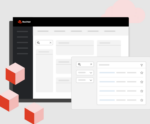Today’s enterprises need to automate business processes and decisions just to stay competitive. For years, large organizations have had access to commercial business process management (BPM) software that smaller companies can’t afford. Red Hat’s open-source JBoss BPM Suite and JBoss BRMS lower the cost of ownership while ensuring enterprise-class support.
JBoss BRMS is a comprehensive platform for business rules management, business resource optimization, and complex event processing that is based on the JBoss Drools and OptaPlanner open-source projects. JBoss BPM Suite includes the same three open-source elements, plus advanced tools and runtime support for Business Process Model and Notation v2.0 (BPMN2) based on jBPM community work. Both products are tested, platform-certified, and backed by Red Hat’s world-class support organization, which provides 24×7 SLAs.
“Most businesses that are automating operational processes need software that not just drives work through the organization and manages that process, but also provides the business rule piece to make decisions along the way,” said Phil Simpson, senior principal product marketing manager at Red Hat. “Some of our customers purchase JBoss BRMS because they want to automate decision-making outside the context of any process, or their BPM software lacks the business rules piece. Some customers start with business rules and then move up to BPM.”
JBoss BRMS democratizes business rules
Businesses want to automate more decisions made in the normal course of business, and they need to ensure that those decisions are accurate and repeatable. Using JBoss BRMS, they can deploy decision services across physical, virtual, and cloud environments, quickly build resource optimization solutions, and shorten development cycles.
“Companies need three things around decision management: visibility, consistency, and agility,” said Simpson. “They need visibility into the rules that go into a decision; consistency that ensures decisions are made the same way every time; and the agility to update the rules quickly as the market or regulatory environment changes.”
For example, a Latin American government benefits agency noticed that claimants were calling in more than once about a single claim because some call center representatives would provide answers that were more favorable to the claimant. Using JBoss BRMS, the agency was able to ensure that the rules upon which decisions are based are applied the same way each time.
Notably, JBoss BRMS enables business users without any programming knowledge to visually define business rules. They can view business rules in decision tables and scorecards rather than in code. That way, business users always know what the rules are, and if the rules need to be changed, there’s no need to involve IT. Updates are always timely, and enterprises avoid the cost of manual software updates.
BPM rounds out capabilities
More decisions are being automated as they flow through business processes, but there are still manual steps along the way when the complexity of a task requires human intervention. Using JBoss BPM Suite, business users can define their own business process models as flowcharts thst are executed by the software. Because the processes can be defined and modified by business users, they have complete visibility into and control over the way business processes are implemented. Moreover, business users can ensure that business processes are executed consistently, which is mandatory for regulatory compliance.
Both JBoss BPM Suite and JBoss BRMS are integrated with other JBoss products (including JBoss Fuse) to provide enterprises with even more flexibility and control.
“Solving business problems usually requires more than BPM or business rules software. You’ll want to handle interactions with external systems so that if you’re automating a business process that requires you to talk to a mainframe, SAP, Salesforce or whatever systems you’re using, you’ll use JBoss Fuse to do that,” said Simpson. “That’s why customers buy a combination of JBoss products.”
What’s next
Red Hat plans to offer all of its JBoss products as cloud-based services, and it will be integrating more of its products so customers can construct mobile-enabled apps that interact with processes, make operational decisions, and manage business rules.
“We have a very good foothold in the cloud space with our OpenShift platform, which enables you to move workloads to private or public clouds very easily,” said Simpson. “We use a hybrid approach, recognizing that a combination of private and public clouds offers the greatest flexibility to meet an organization’s needs.”
Red Hat also intends to use AI, machine learning, and robotic technologies to automate tasks that currently require the manual intervention of an expert.
“We’re making it easy for a broader range of businesses and users to solve business problems using open-source technology and the cloud,” said Simpson.
Learn more at www.redhat.com.






